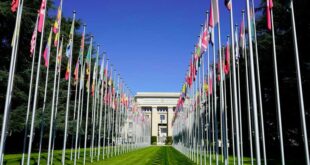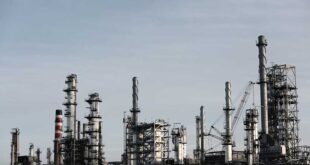Nimra Saif
The Arctic Region has been on a journey of geographical transformation induced by Climate Change. There has been an unprecedented percentage of what can be called as ‘Arctic metamorphosis’, witnessed as deterioration of climate twice as rapidly as in any other parts of the globe. There has been a decline in permafrost, sea ice, icesheets on ocean and glaciers in Canada, Alaska and Greenland. There has been a notable decrease in the snow cover that earlier occupied the land. These alarming changes in the physiography were first recorded in the 1980s, and have been on a surge ever since. Around 1 million sq. miles of sea ice has shrunk over the past 50 years, halving the size of Arctic icecap. The transition has been so dramatic that it actually cut the turf to Asia, revealing the fabled North West Passage that European voyagers sought for shipping, for over centuries. As of now, it is not a matter of ‘if’ but ‘when’ will the Arctic Passageway open for regular marine transportation and when would the exploration of lucrative natural energy-resources deposits be possible.
The regressing ecosystem has been the least of the concerns of our capitalist, market-oriented, energy-hungry world economy. The melting ice caps and glaciers are paving way to access the 13% of globe’s undiscovered oil and 30% of globe’s undiscovered natural gas lying at the Arctic Ocean seabed, a home for world’s largest unexplored hydrocarbon resources. These percentages translate to 1,669 trillion cubic ft. of natural gas and 90 billion barrels of oil. The economic potential for these energy resources exceeds $2.7 trillion for Russian and American Arctic claims alone. Moreover, there are massive reserve potential for rare mineral resources also referred to as “strategic minerals” including palladium, nickel and iron-ore which might prove to be a greater economic driver than the energy resources. Apart from these, Arctic has tremendous new opportunities for high sea fisheries. The Ocean has vast stocks of marine resources including shrimp, pollock, crab, pacific salmon, squid, scallop and halibut. It would prove to be a new arena of industrial-scale commercial fisheries.
Whether the sought resources are hydrocarbon or mineral, they must procure their route via pipelines or shipping routes to the receptive markets. Along with the transitory passageways, there would be need for improved icebreakers, satellite and communication and navigation, deep water ports, double-hulled shipping vessels, operational search and aviation infrastructure development.
An even better incentive would be the inception of new sea-lanes initiated by the great Arctic melt. The shipping shortcuts of Northwest Passage and Northern Sea Route would reduce the nautical transit times by days, saving the shipping corporations thousands of miles. The sailing distance between Yokohama and Rotterdam on the Northern Route would be reduced from over 11,200 nautical miles to 6,500 nautical miles, in comparison with the current Suez Canal Route which would amount to the savings of up to 40 percent of shipping expenses. Likewise, the voyage from Rotterdam to Seattle would be trimmed by the North West Passage by over 2000 nautical miles, reducing the distance up to 25 percent in comparison with the current Panama route.
Taking into consideration the fuel costs, canal fees and various other miscellaneous charges that amount to lofty freight rates, these alternative passages will cutback the charges of a single voyage down to at least 20%, saving around $17.5 million, saving billions of dollars per annum for the shipping industry. These savings would be far greater for the megaships that have to sail all the way down to Cape Horn and Cape of Good Hope.
The world’s shipyard’s have already started building ice-capable ships, beginning with the groundwork for the navigation through these sea-lanes and for the transport of Arctic’s natural gas and oil. Billions of dollars are being invested by the private sector for the fleet of Arctic tankers. As of now, around 496 ice-class ships have been built worldwide. The gas and oil markets are investing in development of the avant-garde technology and assemblage of advanced ships, possessing double-acting tankers, that have the dual technology of steam bowing through open waters and proceed stern to smash through deep ice. These ships are capable of sailing unobstructed to Arctic’s burgeoning gas and oil fields independent of ice-breakers. These breakthroughs will turn previously unviable commercial projects into booming businesses.
Of all the Arctic States, the largest stakeholder with greatest intrinsic interests in the region is Russia. A significant 20% of Russia’s GDP comes of Russian North, and accounts for 22% of all exports. The resources of Arctic are of strategic importance for Russia; therefore, it has been so far the largest investor in the region. It has invested in the fleet of nuclear-icebreakers, the only of their kind in the world. Further, Russia is planning on increasing this fleet of 4 to 13 with a cost of over $1.5 billion. Moreover, Russia has endeavored to aim for 92.6 million ton of cargo by 2030. These hefty investments indicate the importance of Arctic as a market. Russia aims at charging for providing the sea-routes since it has the largest geographical proximity to the ocean as well as providing shipping and infrastructure in the region. The claims of oil and gas reserves are only an addition to the gains Russia has planned to make.
Considering the economic and strategic importance of Arctic and its potential to add to the world’s oil, gas, minerals, fisheries and shipping reserves makes it an alluring marketplace. The region itself has been divided among the ‘Arctic States’ that include Russia, Denmark, Iceland, Finland, Sweden, Norway, Iceland, and United States. Instead of making efforts to preserve the deteriorating environmental conditions and the physiographic challenges, these states are only in a race of dividing the resources among themselves and reaping as much assets as they can. All domains of Arctic are on sale; including the sea, land, sea-life, mineral resources, and fossil fuels. The world has turned a blind eye towards the environmental consequences for the region of the planet which will surely cost more than the gains. Putting nature’s commodities on sale have never worked in anyone’s favor.
 Geostrategic Media Political Commentary, Analysis, Security, Defense
Geostrategic Media Political Commentary, Analysis, Security, Defense





